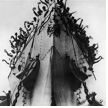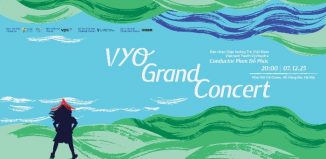KVT is ready to rush for the barricades
 |  |
Saturday was REVOLUTIONARY!
Sergie Einstein hoped that the music score to his 1925 silent movie be rewritten every 20 years. We were lucky to be part of one of those rewrites.
It was one of those events at the Opera House with non allocated seating so we got there early in our Saturday casuals to grab a good seat and discovered that the European Commission was hosting a pre-event wine and nibbles event. We felt a bit like the common sailor recruits on the Battleship Potemkin suddenly finding ourselves in the Admiral’s suite, but we managed to put on our best proletariat faces and discover how the bourgeoisie and the aristocratic fared and in the end enjoyed it so much that we didn’t have to jettison anyone overboard or over the balcony (as the crew of the battleship did to seven of their officers in their 1905 mutiny).
Sergie Einstein hoped that the music score to his 1925 silent movie be rewritten every 20 years. We were lucky to be part of one of those rewrites. Pierre Oser composed a new score for two pianos and he played one grand in the pit with Frank Strobel playing the other. And what a fabulous score and what fabulous playing. The music fitted the action seamlessly and was so appropriate that at times I was ready to stand up and shout encouragement to the mutineers, jeer at the Czar’s troops and Cossacks as they mowed down the citizens of Odessa and certainly rush forward and join the revolution. I had to agree with Joseph Goebbels statement (probably before he banned the film) that it was marvelous, without equal and would be likely to turn anyone who had no firm political convictions into a Bolshevik. I was prepared to rush for the barricades.
The most famous score of recent times was the 2004 collaboration by The Pet Shop Boys and initially accompanied by the Dresden Symphony Orchestra for massively huge concerts and film showings, but I liked the Oser score more as it fitted the scenario of the film being shown in cigarette-wreathed film palaces throughout the proletariat world to the accompaniment of a very busy-fingered pianist, or flat-out duettists.
A totally superb musical event.
World class again…..and thanks to the Goethe Institute, totally free!
As I keep saying…Where else but in Hanoi?
[ C O R R E C T I O N ] The score for the German version was written in 1926 by Edmund Meisel. Meisel’s score serves as the basis for a new version for two pianos by German composer, musician and conductor Pierre Oser.
![]()
| Not a reviewer, not a critic, “Kiếm Văn Tìm” is an interested, impartial and informed observer and connoisseur of the Hanoi art scene who offers highly opinionated remarks and is part of the long and venerable tradition of anonymous correspondents. Please add your thoughts in the comment field below. |














I love the peformance of two pianisti too! Really really amazing! In my opinion, the music does a good jod in increasing the film’s value!Thanks Pierre Oser and Frank Strobel! Thanks EUC and Goethe Institute!